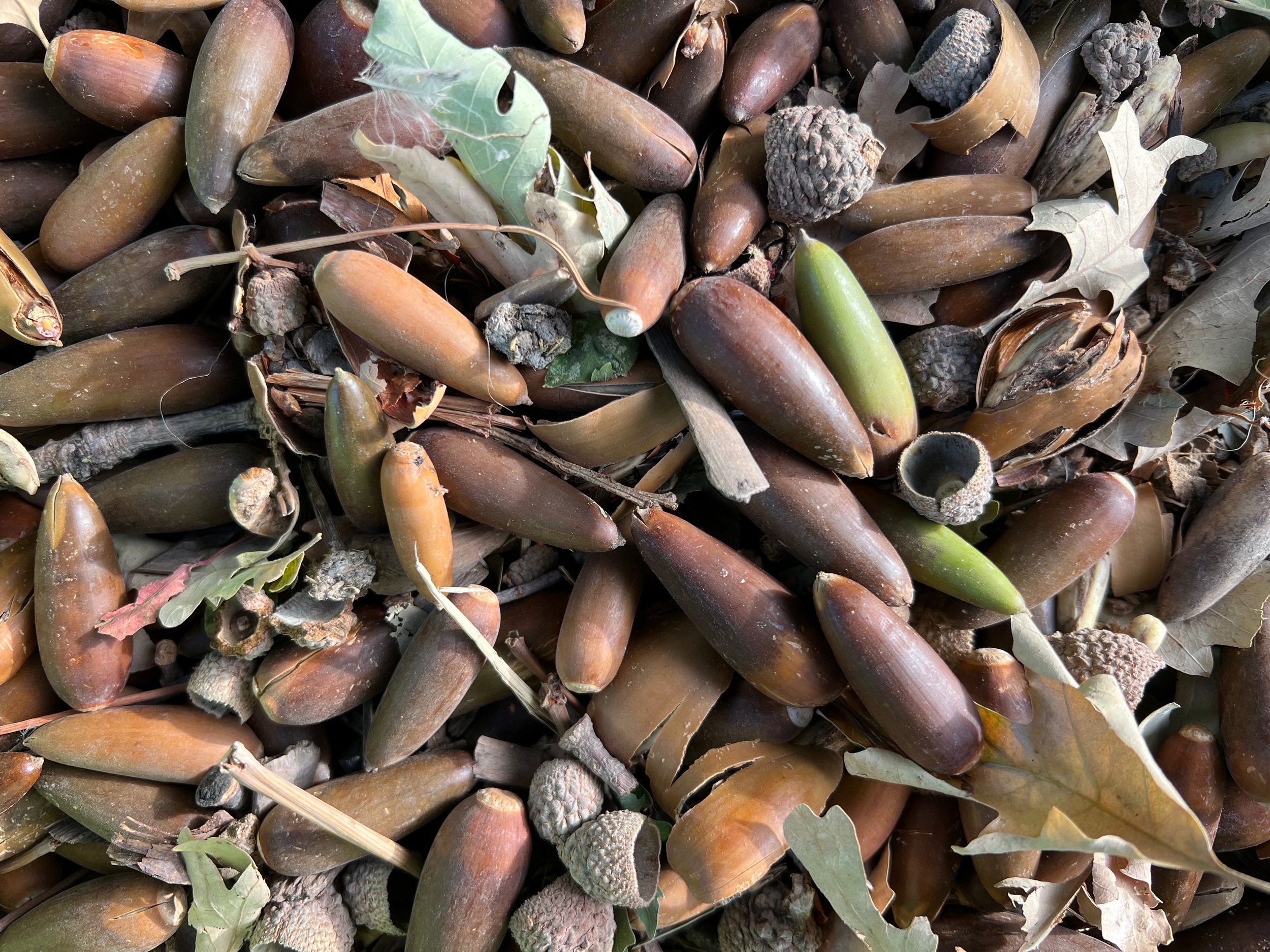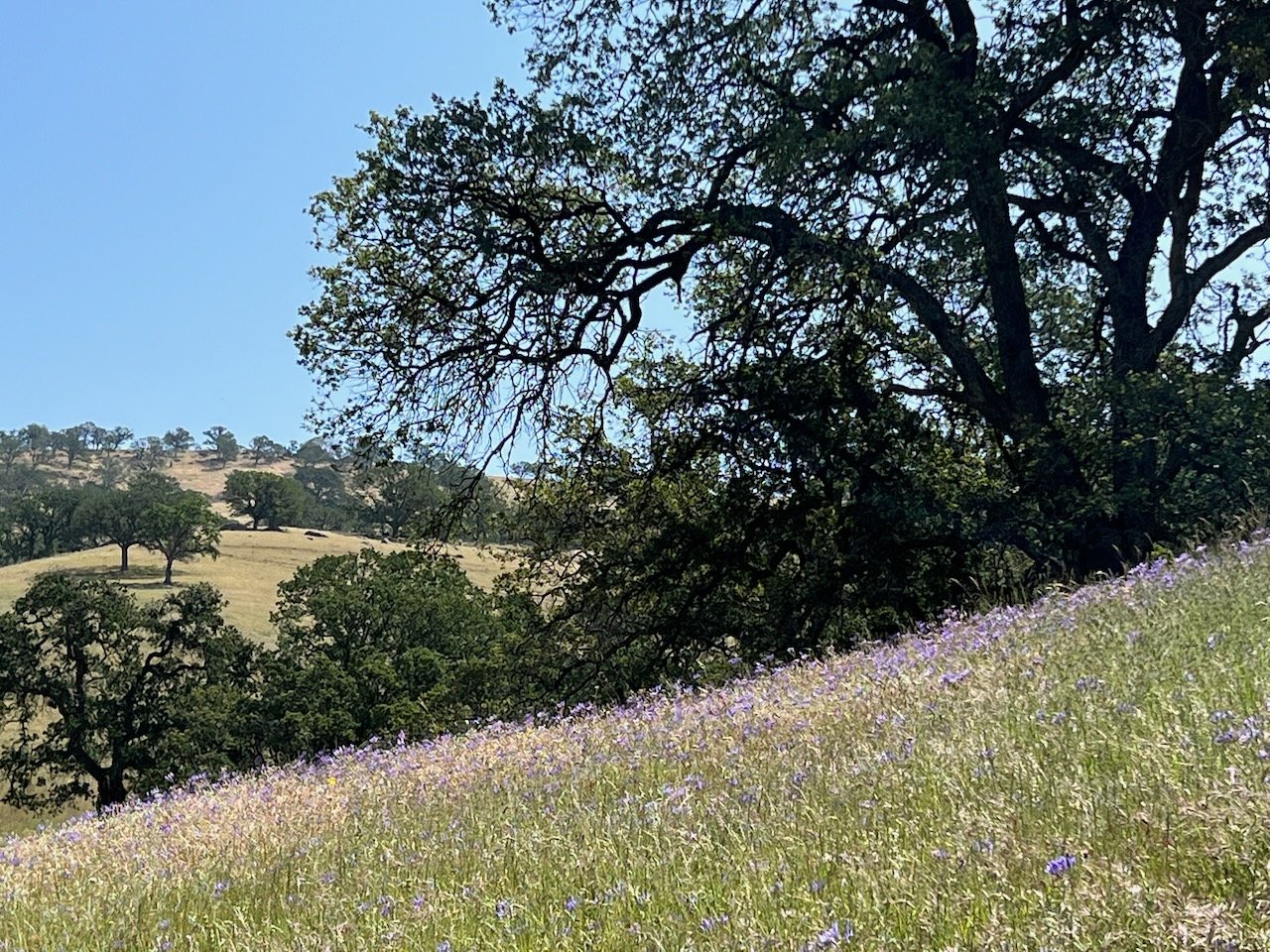We have an enormous Valley Oak (Quercus lobata) in our driveway garden. It’s in a very inconvenient place, right on the edge of the driveway, and because of that you’d think its growth would be compromised. Fully half of its root system is compacted by concrete and parked cars. This isn’t good for any tree, and definitely not for Valley Oaks, which usually grow in grasslands and oak woodlands. But this tree was planted many years ago by a squirrel and the previous owners of this house never pulled it out, so it’s grown into the space and is extremely healthy. Valley Oaks can also take some irrigation (they like wet crevices and canyons in the wild) and this one gets that, being surrounded by chosen landscaping. Every year I have my tree guy come out and look at it, and usually it just gets a trim every couple of years. This year, the tree guy was worried about its split trunk (this compromises the strength of the canopy), and so we will be installing cables to decrease the chances of a total split. But anyway, that’s not what I wanted to write about today. No, I wanted to write about the acorns.
We are having a mast year. A mast year is marked by a lot, and I mean a LOT, of acorns. All oaks mast, and in fact many plants mast, which just means they produce a lot of seed in any particular year. Sometimes ithis masting happens every year, sometimes every other year, sometimes two years in a row and then not again for 20 years, there is really no way to tell if it’s going to be a mast year. In the case of this particular Valley Oak, our last mast was three years ago, and frankly, I didn’t expect another one so soon. What makes it an especially interesting natural process is that no one really knows why masting happens.
This is how it looks every single morning - a new carpet every day.
Masting is a great mystery, but an even greater mystery is that all the trees of the species, within a very large geographical area, all mast at the same time. Thinking about that will really twist your noodle. How do they all know to do it at once? And why do they mast in the first place?
Well, there’s lots of theories, and they all make sense. One theory is that mast seeding is for predator satiation. When a population of plants produces seeds in unusual amounts, their predators will never be able to eat them all, leaving some to germinate and produce the next generation of plants. Another theory is about pollen coupling. This is a concern in the timing of flowering in pollinating species - the flowers need to sync with one another in order to cross pollinate. If all individuals in a population flower at the same time, more flowers will be pollinated, leading to increased seed production. But it’s expensive to make a lot of flowers, and plants have to have enough resources to do that. This explains why trees might mast following wet years - more water means more resources, means more flowers, means more seed. But some folks think that trees mast following drought years, as a ‘last gasp’ effort to produce offspring. Resource budgeting is another possible explanation. Plants need energy to produce seed, and they also need energy just for growing. Which do they concentrate on in any given year? In theory, if all plants in a large population are experiencing a similar amount of resources, they will either grow or flower similarly. Or maybe it’s about resource storage, and the trees are ‘saving’ resources for many years until they are ready to produce a great amount of seed. Environmental cues also result in hormonal responses in plants, so masting may have nothing to do with resources or pollination at all. Of course we also can’t leave out the possibility that the trees are ‘talking’ to each other, communicating through underground fungal networks. Other species have been shown to do this, so it’s no great leap to imagine that oaks do this too.
Whatever the reason (and maybe some things will just never be explained, and how lovely is that? that we can still be mystified by nature), what it means for me personally is lots of sweeping and shoveling into the green bin. During our last mast year, I left a lot of the acorns where they lay, and I’m still pulling out oak seedlings. One big Valley Oak is enough, thank you, so I’m collecting as many as I can this year.
Meanwhile, many times every evening, sitting on the couch watching TV, Tom and I jump when a particularly hefty acorn lands on the roof of the chicken coop, producing a loud BANG. I wonder if the chickens are sleeping at all.



























